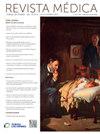cefalea por uso excesivo de fármacos
IF 0.4
Q4 MEDICINE, GENERAL & INTERNAL
引用次数: 0
Abstract
Medication overuse headache (MOH) is a complex and still-developing entity, with diagnostic criteria established in the 3rd edition of the International Classification of Headache Disorders (ICHD-3). It has a prevalence of 2.2% in the general population and produces a severe burden of disease in those who suffer from it. Patients are heterogeneous in several respects; it has not been determined whether the patient's genetic makeup triggers a chronic headache, or if the medications themselves are the sole cause of the chronicity of the patient's primary baseline headache. There are complicated and uncomplicated MOH. Treatment must be multidisciplinary. Abrupt detoxification, associated with the early initiation of preventive therapy, has been shown to be most effective. New therapies for the preventive treatment of migraine have generated new paradigms in the management of MOH, and there are currently several therapeutic alternatives. There are three detoxification regimens: outpatient regimen, hospitalization in a health center, and day hospitalization. The medium and long-term prognosis is positive, but a follow-up program is required for these patients over time due to their high relapse rate, especially during the first year.
药物滥用头痛
药物过度使用性头痛(MOH)是一种复杂且仍在发展中的疾病,其诊断标准在《国际头痛疾病分类》(ICHD-3)第三版中确立。它在一般人群中的患病率为2.2%,对患者造成严重的疾病负担。患者在几个方面是异质的;目前还不确定是患者的基因构成引发了慢性头痛,还是药物本身是导致患者原发性基线头痛的唯一原因。卫生部有复杂和简单之分。治疗必须是多学科的。与早期开始预防性治疗有关的突然解毒已被证明是最有效的。预防性治疗偏头痛的新疗法已经在MOH的管理中产生了新的范例,目前有几种治疗替代方案。有三种排毒方案:门诊方案、保健中心住院和日间住院。中期和长期预后是积极的,但由于这些患者的复发率高,特别是在第一年,需要长期随访。
本文章由计算机程序翻译,如有差异,请以英文原文为准。
求助全文
约1分钟内获得全文
求助全文
来源期刊

Revista Medica Clinica Las Condes
MEDICINE, GENERAL & INTERNAL-
CiteScore
0.80
自引率
0.00%
发文量
65
审稿时长
81 days
 求助内容:
求助内容: 应助结果提醒方式:
应助结果提醒方式:


